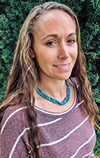As we continue into late summer, we continue the fly control battle. We’re also dealing with forage drying out, including plant heads seeding out and, unfortunately, possibly ending up in the eye of a calf or two. This eye irritation leads to increased eye secretions, which attract more face flies, which in turn increases the odds of pinkeye occurrence and spread throughout a herd.
As we’ve come to know, pinkeye, or infectious bovine keratoconjunctivitis (IBK) is an infection of the eye tissues caused by Moraxella bovis, a bacterium that increases tearing and squinting, eventually resulting in clouding of the eye and, if left untreated, can cause blindness. Painful eyes due to IBK cause cattle to experience a decrease in appetite, which negatively impacts performance. Cattle with scarred eyes will also receive reduced value at market. In addition to seasonal dust and pasture conditions, stress, processing events, age and mineral status may influence susceptibility to this disease.
There are vaccine products available to include in a herd health plan; however, each IBK strain will require a different product, and efficacy will vary from herd to herd and year to year. Face flies spread the bacteria from one animal to the next while feeding on eye secretions, so proactive control of face flies will have a significant impact on preventing and managing IBK. Consider fly control methods, including providing minerals with larvicides, hanging dust bags, using pour-on products or applying insecticide eartags. Keep in mind that the best control is accomplished by implementing more than one of these practices. If feasible, cut tall grass and weedy areas that are seeded out to reduce environmental irritants, and consider moving cattle to a new pasture or grazing section with a lower fly density.
Should an animal in your herd begin to show signs of IBK, it is recommended to isolate the animal to reduce spread to the rest of the herd. Following isolation, work with your veterinarian to determine an antibiotic protocol and consider applying a patch with a topical spray, drop or ointment, or temporarily sewing the eye shut. Covering or closing the eye limits sunlight exposure on the eye, which will aid in healing. Covering the eye also aids in reducing continued spread of the bacterial agent. The animal should begin to heal within three to six weeks following treatment. If there is a poor response to treatment, increased case numbers or cases happening outside of fly season, consider testing for mycoplasma or infectious bovine rhinotracheitis (IBR).








